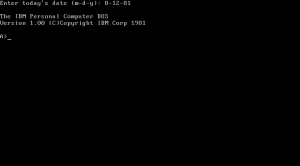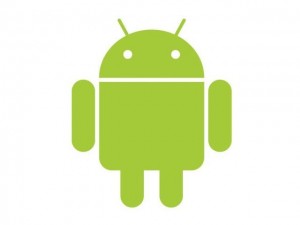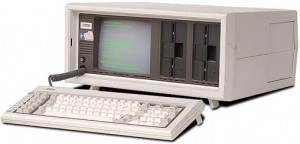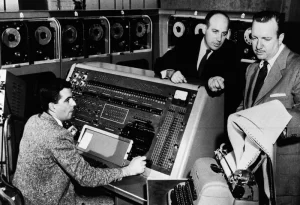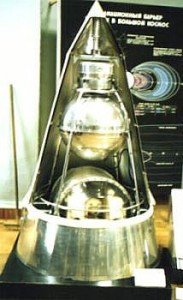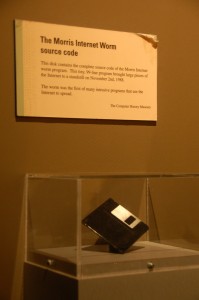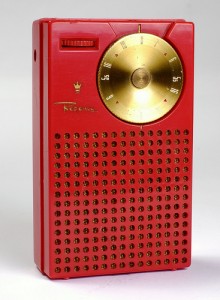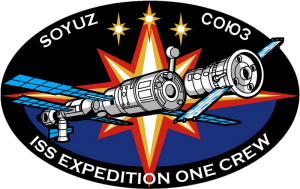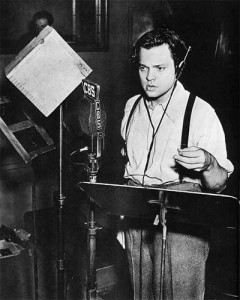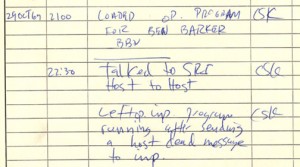IBM Signs A Deal With The Devil
IBM and Microsoft formally sign an contract whereby Microsoft will create an operating system for the in-development IBM PC. During the summer of 1980, IBM was originally interested in licensing the popular CP/M operating system, but the inability to come to an agreement with Digital Research led IBM to ask Microsoft if they could develop an operating system similar to CP/M. Microsoft was already going to work with IBM to deliver their BASIC programming language for the IBM PC, but they did not have an operating system. However, Microsoft knew that a small company named Seattle Computer Products had developed an operating system similar to CP/M called QDOS, for Quick-and-Dirty Operating System. Microsoft suggested to IBM that QDOS could work as the IBM PC’s operating system. IBM asked Microsoft to license and further develop the operating system, which led to the formal contract on November 6, 1980. After the contract was signed, in December 1980 Microsoft would license the QDOS operating system to begin development of the IBM PC version. In July of 1981, just weeks before the IBM PC would ship, Microsoft purchased full rights from SCP for what was now called 86-DOS. IBM PC-DOS was the name of the operating system that would ship on the IBM PC, but it was Microsoft that wholly developed the operating system after acquiring it from SCP.
Microsoft shrewdly included a clause in the agreement that allowed them to sell the operating system to other companies under the name MS-DOS. It was this clause that changed the course of technology history, opening the door for Microsoft to become the dominant technology company of the PC era. Microsoft seemed to understand that by controlling the operating system, the underlying hardware became less relevant. IBM obviously did not consider this concept, nor did they foresee that companies would be able to successfully clone their hardware platform. Once companies were able to clone the hardware, they needed an operating system. Microsoft was more than happy to provide them with that operating system, which by design was completely compatible with IBM’s PC-DOS. Once IBM lost control of the platform they created, power shifted to the one major commonality between the IBM-compatible clones: Microsoft’s operating system. It was IBM’s name that pushed the IBM PC into prominence, but it was the combination of hardware cloning and Microsoft licensing the operating system that created the dominant platform of the PC era, crushing nearly all competing personal computer platforms in the process. Without this seemingly minor clause in this pivotal contract, the history of the PC era could have been quite different than it was.
Android Introduced
Google introduces the Android platform, its mobile operating system for cell phones based on a modified version of the Linux operating system. The first Android-based phone would ship in September of 2008.
Attack of the Clones
Compaq announces their Compaq Portable PC, one of the early portable computer designs and, more significantly, the first successful IBM-compatible PC clone. Compaq eventually succeeded where other similar companies failed because they took considerable care in creating their product on two fronts. First, they created the first 100% IBM-compatible BIOS, the only proprietary component of the IBM PC. Spending $1 million to reverse engineer the IBM BIOS using clean-room techniques, this also allowed them to avoid copyright infringement charges. Finally, they were legally and financially prepared for the inevitable lawsuit IBM would bring against then, which was dismissed as expected.
By proving that a clean room, reverse-engineered BIOS could create 100% IBM-compatible computers and withstand legal challenges from IBM, Compaq paved the way for the flood of IBM-compatible clones that would begin in the mid-1980’s. This was the opening of the Pandora’s Box that led to IBM losing control of the platform, and the emergence of Microsoft and Intel as the dominant technology companies of the PC era. Even though IBM lost control of the platform they created, the weight of the IBM name combined with the eventual low cost of the IBM-compatible platform crushed nearly all other competing personal computing platforms of the era.
Computer First Predicts Presidential Election
As part of a publicity stunt to help boost sales, Remington Rand collaborates with CBS to have its UNIVAC computer predict the results of the 1952 US presidential election between Dwight Eisenhower and Adlai Stevenson live on air. Because the pre-election polls had the election very close, the publicity surrounding a computer predicting the winner generated a lot of popular interest.
UNIVAC correctly predicted a landslide victory by Eisenhower early in the evening after only 3 million votes had been returned and entered into the system. However, because it was so different than the expected result, the decision was made to hold back the computerized prediction. It appears that both Remington Rand and CBS feared the computer was incorrect so they didn’t want to take the risk. It was only late in the broadcast when continuing returns seemed to indicate that UNIVAC was in fact correct, did CBS announce the landslide prediction from the computer and the fact it had done so hours earlier. In the end, UNIVAC had come within 3.5% of the popular vote, within 4 electoral votes, and predicted 100-1 odds of the Eisenhower victory.
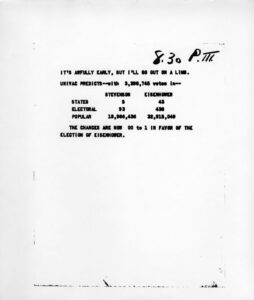
First Earthling Into Orbit
The Soviet Union launches Sputnik 2, the second spacecraft launched into Earth orbit and the first spacecraft to carry a living creature into orbit. Laika, a Siberian Husky dog, unfortunately only survived a few hours into the flight and died from stress and overheating. The Soviets had planned to euthanize Laika regardless, as Sputnik 2 did not have de-orbiting or reentry technology designed into the spacecraft.
Morris Worm Tunnels Through Internet
Robert Morris of Cornell University launches a self-replicating worm as part of a research project designed to determine the size of the early Internet. It was intended to count the number of computers that initiated connections when the worm was loaded onto them. However, due to a programming error, the “Morris Worm” began repeatedly infecting machines, clogging network traffic and causing machines to crash. Eventually the worm spread to 6,000 machines, which was roughly 10 percent of the Internet at the time, causing significant downtime for government and university systems for two days. Morris was dismissed from Cornell, sentenced to three years probation and a $10,000 fine.
First Transistor Radio Goes on Sale
The Industrial Development Engineering Associates company begins selling the Regency TR-1, the world’s first commercial transistor radio. Texas Instruments designed and developed the transistor technology who then partnered with IDEA to design and manufacturer the completed radio. The TR-1 sold over 100,000 units, ushering in the commercial transistor industry.
First Crew to International Space Station
Russia launches Soyuz TM-31, carrying the first crew to the International Space Station. The ISS has been continuously manned since this first mission.
War of the Worlds Scares Pants Off Nation
Orson Welles broadcasts his radio adaptation of The War of the Worlds, which reportedly caused panic among listeners who believed the theatrical presentation was a real news broadcast. Regardless of the actual levels of panic caused, The War of the Worlds is one of the most famous radio broadcasts in history.
First Message on the Internet
October 29, 1969
UCLA student Charley Kline attempts to transmit the text “login” to a computer at the Stanford Research Institute over the first link on the ARPANET, which was the precursor to the modern Internet. After the letters “l” and “o” are sent the system crashed, making the first message ever sent on the Internet “lo”. About an hour later, after recovering from the crash, the full text of “login” is successfully sent.

